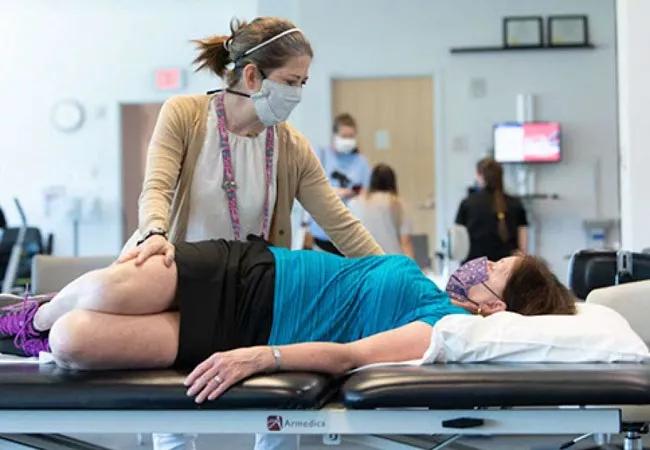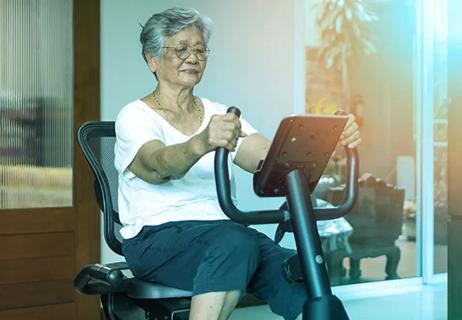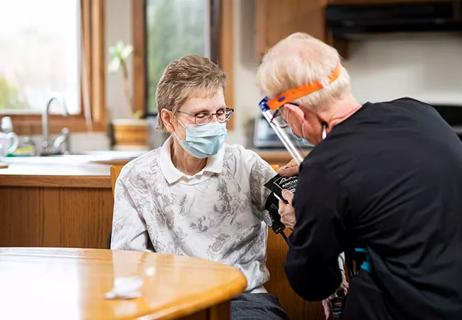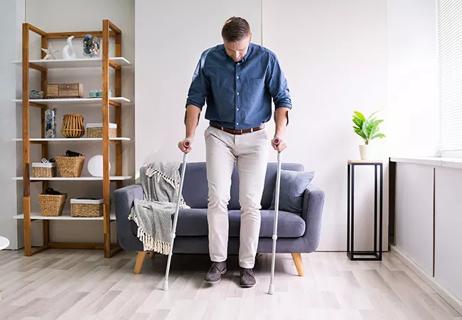Advertisement
The approach fosters continuity of rehabilitative care, promotes care coordination

Over the past few years, Cleveland Clinic’s Department of Physical Medicine and Rehabilitation (PM&R) has reorganized its outpatient offerings in a number of subspecialty areas. The resulting outpatient clinics are dedicated to the management of spasticity, spinal cord injury, traumatic brain injury, stroke recovery, amputation and adult cerebral palsy. Additionally, an outpatient dance medicine clinic is slated to open in autumn 2021.
Advertisement
Cleveland Clinic is a non-profit academic medical center. Advertising on our site helps support our mission. We do not endorse non-Cleveland Clinic products or services. Policy
Establishment of these outpatient clinics generally formalized outpatient care programs that had been in place for years, but Department of PM&R Chair Francois Bethoux, MD, says that formalization has merits that help strengthen the continuum of care for patients with complex and ongoing rehabilitative care needs.
Consult QD recently spoke with Dr. Bethoux for insights on the value that outpatient PM&R clinics can provide and advice for when and how to offer them. An edited transcript of the discussion follows.
Dr. Bethoux: In the past few years, Cleveland Clinic has expanded its inpatient rehabilitation offerings in Northeast Ohio by opening three new freestanding inpatient rehabilitation hospitals with a total of 180 beds. As we have grown our inpatient rehabilitation, there’s been a parallel growth in the need to ensure that these patients with complex conditions continue to receive the same high-level care upon their discharge home or to other care settings. Specialized outpatient clinics are an optimal way to ensure that the continuum of specialized care these patients need is extended in this way.
Advertisement
Dr. Bethoux: It’s mainly because of the complex needs of many inpatient rehabilitation patients and other targeted patient populations, like those with spasticity or cerebral palsy. These patients may be very disabled from their condition. They often have equipment needs as well as the need for monitoring to ensure their function is being maintained. Some may have cognitive issues, transportation issues or any number of other challenges. The point is that they often need someone to make sure all their comorbidities and other challenges are being well managed so that they avoid spiraling downward and losing the ability to live at home. This requires coordination of care on a number of fronts to address multiple problems to preserve patients’ function and quality of life in their own environment. That is where PM&R physicians excel, and a dedicated outpatient clinic provides the multidisciplinary and multispecialty infrastructure to support physiatrists in that role and promote coordination of care.
Dr. Bethoux: There is a multidisciplinary aspect to all our outpatient clinics. Although patients may come to see one provider, many see several multidisciplinary providers on the same day, and the idea is to provide access to a multidisciplinary team. Often outpatient clinic management will begin with a PM&R visit to determine which specific services a patient will benefit from. Then they can be set up to access various forms of therapy — physical, occupational, speech-language — as well as psychologists, neuropsychologists, social workers and physicians from various medical specialties when needed. Those specialties are most often neurology, neurosurgery or orthopaedic surgery, but other specialists are accessible through our outpatient clinics as appropriate. For instance, our spinal cord injury clinic offers ready access to urology expertise. At Cleveland Clinic, one of the distinctive strengths of our outpatient clinic offerings is the depth and breadth of experience of our physicians across all specialties, particularly in managing complex patients with high levels of acuity.
Dr. Bethoux: A good example of extending the continuum of care after inpatient rehabilitation involves the elevated risk of autonomic dysreflexia among spinal cord injury patients. Acute episodes of autonomic dysreflexia can cause serious medical harm or even death if not addressed properly. So it’s imperative that long-term management of people with spinal cord injury include prevention of these episodes, which involves patient education and management of problems that can lead to autonomic dysreflexia. This education and management needs to continue after a patient leaves an inpatient rehab or skilled nursing facility, and the team that runs our spinal cord injury outpatient clinic is highly focused on making sure those efforts are maintained.
Advertisement
There are many examples of the value of the multispecialty coordination promoted by these clinics. One that stands out is our outpatient stroke rehabilitation clinic. This clinic sees patients who may or may not have been through inpatient rehabilitation, but all of them generally need ongoing care for at least a year following their stroke. We’ve set up the clinic to work in coordination with, and in the same location as, the stroke neurology team. Whereas that team focuses on providing secondary stroke prevention, we complement their efforts by offering rehabilitation therapies to improve and maintain patients’ ability to function in their normal environments and enjoy optimal quality of life.
Dr. Bethoux: In general, an outpatient clinic may be an option for any patient population with complex needs across the spectrum of neurological or musculoskeletal conditions that are likely to benefit from a comprehensive care approach. This is particularly true if PM&R expertise is helpful in determining which types of rehabilitation are most appropriate for patients.
Beyond that, three principles are helpful. First, be attuned to perceived need in terms of hearing from patients who are not getting their needs met with other specialties or with current offerings that are not adequately coordinated. Second, discuss the opportunity with colleagues from other specialties, in terms of how you might help them meet certain needs of their patients in an ongoing way. That’s how our stroke rehabilitation clinic came about — as a result of close discussion with colleagues in Cleveland Clinic’s Cerebrovascular Center. Third, evaluate the strengths of your PM&R program and play to those strengths. If there are areas where you have team members who are highly subspecialized, those are natural areas for potentially offering an outpatient clinic.
Advertisement
Dr. Bethoux: The fact that PM&R physicians may see patients from virtually all areas of medicine is both an asset and a challenge. While it allows us to contribute to the care of a wide variety of patient populations, it’s also difficult to address the needs of so many diverse patient groups. But this is ultimately an opportunity to find and foster synergies among multiple disciplines and specialties, and this can make PM&R a pivotal aspect in the continuum of care for many types of patients. We have recently seen this in the role of PM&R within multidisciplinary clinics established to treat people with long COVID. Many patients with chronic disabilities or complex diseases can benefit from the long-term monitoring and therapy that PM&R caregivers provide through outpatient clinics and in other settings. This makes PM&R well positioned to help keep many patients from developing further complications and thereby help contain the costs of care and our society’s overall healthcare burden.
Advertisement
Advertisement

Research to test clinical efficacy and cost-effectiveness versus standard-of-care rehab

Pilot study finds both forced- and voluntary-rate cycling effective for symptom management

Gait becomes more normalized along with gains in speed

Training in stretches, emphasis on biomechanics help ease work-related pain, survey finds

High-intensity cycling program leads to improved walking capacity and upper extremity function

Novel post-acute care model aims to improve functional outcomes with reduced costs

More evidence needed on pharmacologic therapy alone and combined with gait training

Innovative postacute care model reduces costs, improves functional outcomes